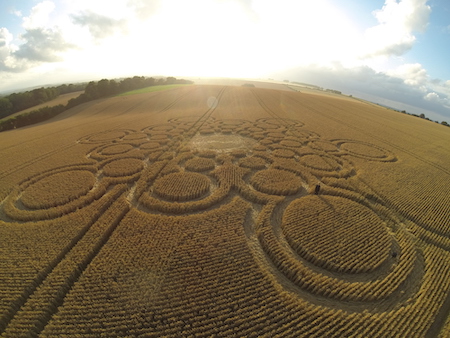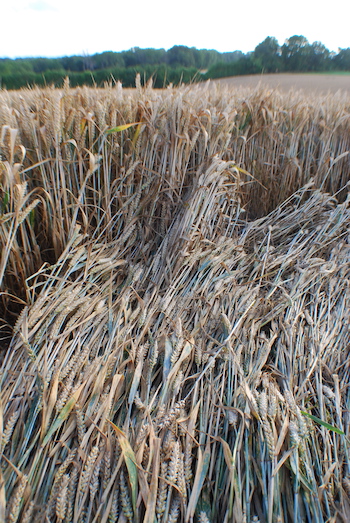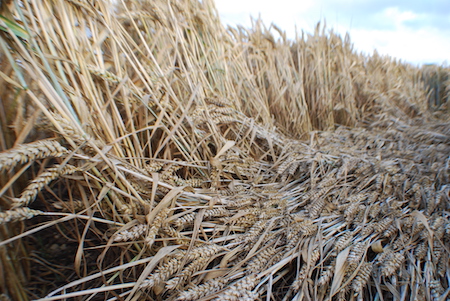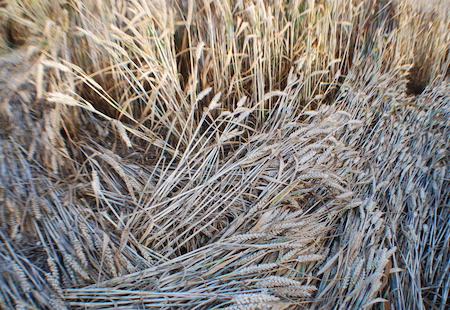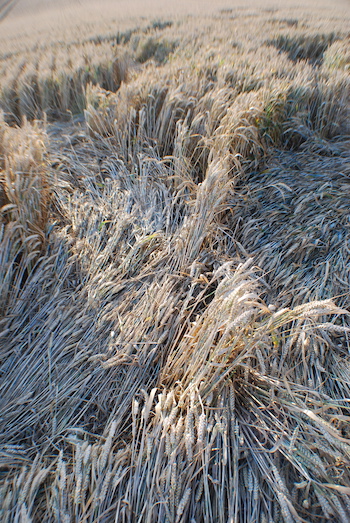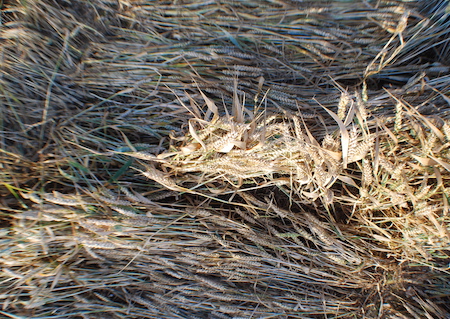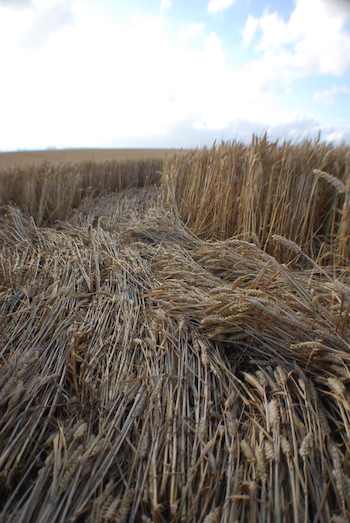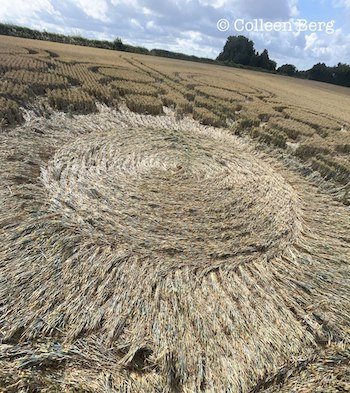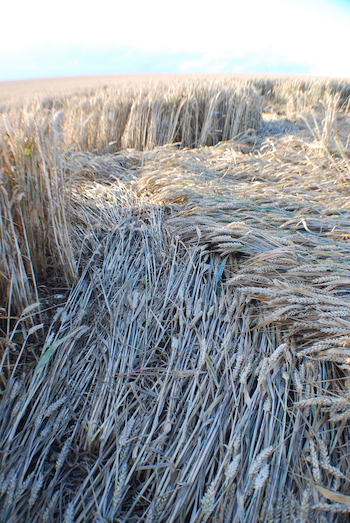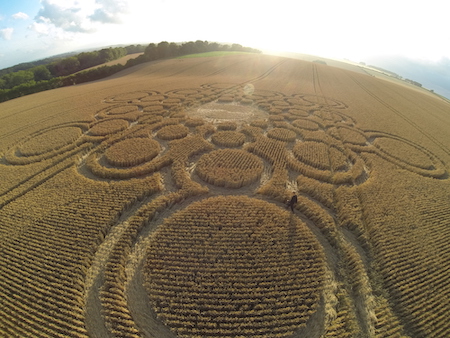 |
||||||||||||||||||||||||
 |
 |
|||||||||||||||||||||||
 |
||||||||||||||||||||||||
 |
 |
 |
 |
|||||||||||||||||||||
| 2015 CIRCLES | 2014 CIRCLES | 2013 CIRCLES | 2012 CIRCLES | |||||||||||||||||||||
|
||||||||||||||||||||||||
 |
 |
|||||||||||||||||||||||

|
Lane End Down, Hampshire, 9th July 2023 Having spoken recently about two previous formations of the 2023 season, at Potterne Hill and Norton Bavant, both of which contain standing centres, I was delighted to see a further example where, this time, the centres of some 42 circles have no visible laid centre. While the wheat here is drilled less densely than in some fields, it is still very difficult to navigate a path through the standing stems.
Upon entering the formation, it quickly becomes apparent that the stems within all laid pathways, and those within the radially laid central circle, have been laid gently and with a flow that echoes that of many, high quality crop circles this season and in seasons past. The fact that stems are not flattened close to the ground illustrates this perfectly, and this is seen throughout the design.
Where laid stems meet standing edges, both outer edges of standing circles and inner edges of laid pathways, the laid stems are brushed lightly towards the edges, in some areas barely having been flattened at all. At junctions where the flow changes direction, stems move effortlessly around corners and into new areas.
If we see the design of this crop circle as a series of rings, increasing in size towards the perimeter of the design, the inner laid ring in each 'arm' is laid anti-clockwise. The second ring is then laid clockwise, enabling visitors to continue the direction of their walk into the next section. This continues and leads us through a 'journey' to the end of each 'arm' and back to the centre. This is reminiscent of the LOVE formation at Hackpen Hill in 2022, where visitors were enticed into a somewhat mesmerising labyrinth of directions and flows.
A further effect of the flow directions here at Lane End Down is that where the inner rings lay side by side around the central circle, there is a point at which adjacent stems are flowing in opposite directions.
Condition of laid stems is exceptional, even a week after the crop circle's appearance. In areas where stems from multiple directions are woven and overlapped, the effect of the overlapping means the height of the layered stems is many inches from the ground. There is very little evidence of damage to stems in all parts of the formation.
In the outer pathways, which define the shapes around the standing circles, the lay of stems is incredibly fluid, with directional changes appearing smooth and subtle. While different in design, this element is very similar to the surrounding pathways in the Patney crop circle of 2020.
Link to: Patney 2020
The radially laid central circle, photographed on day 2 by Colleen Berg (see image below) is another similarity to Patney in 2020. Here, the stems are 'combed' outwards towards the perimeter, while the centre is a clockwise, flattened circle. Where the edges meet the surrounding laid crop, stems sit gently over the outer section.
This is a remarkable and enigmatic design with gentle and intricate inner features, many of which are very difficult to explain. Thank you Colleen Berg for the wonderful, early photos from within.
Crop Circle Summary
Alternative Websites |


